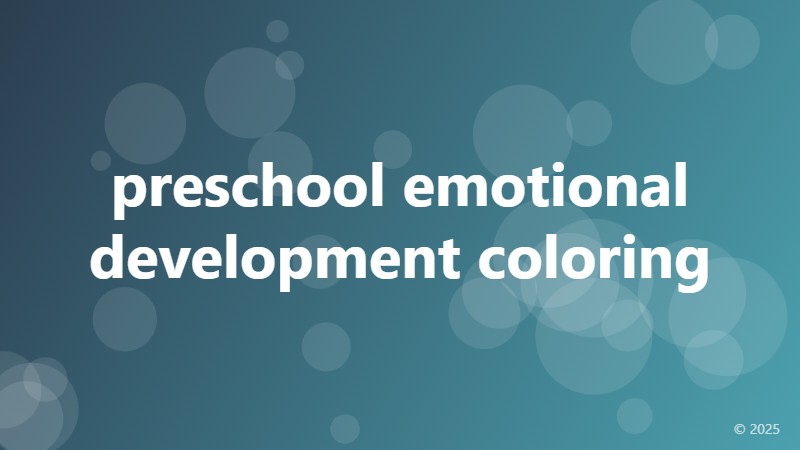preschool emotional development coloring

The Power of Coloring in Preschool Emotional Development
As a preschool teacher or parent, you're likely no stranger to the importance of emotional development in young children. But did you know that something as simple as coloring can play a significant role in helping your little ones develop essential emotional skills? In this article, we'll explore the connection between preschool emotional development and coloring, and provide you with some practical tips on how to incorporate this activity into your daily routine.
Why Emotional Development Matters in Preschoolers
Emotional development is a critical aspect of a child's overall growth, and preschool is a crucial stage in this process. During this period, children begin to develop emotional regulation skills, learn to recognize and express their emotions, and form relationships with others. A strong foundation in emotional development sets the stage for future success in social, academic, and personal domains.
How Coloring Fosters Emotional Development
Coloring is more than just a fun activity for preschoolers – it's a powerful tool for emotional development. Here are some ways in which coloring can benefit your child's emotional growth:
Self-Expression and Confidence: Coloring allows children to express their feelings and thoughts through art, promoting self-confidence and self-awareness. As they create, they develop a sense of pride and ownership over their work, which can translate to other areas of their lives.
Emotional Regulation: Coloring can be a calming and soothing activity, helping children to regulate their emotions and manage stress. This is especially important for preschoolers, who may still be learning to navigate their feelings.
Empathy and Understanding: When children color, they're able to explore different emotions and perspectives through their artwork. This can help them develop empathy and understanding for others, a critical component of emotional intelligence.
Practical Tips for Incorporating Coloring into Your Preschool Routine
Ready to harness the power of coloring for your preschooler's emotional development? Here are some practical tips to get you started:
Make it a Routine: Set aside a specific time each day for coloring, making it a consistent and predictable part of your child's routine.
Provide a Variety of Materials: Offer a range of coloring tools and materials, such as crayons, markers, and paints, to keep things interesting and engaging.
Encourage Imagination: Allow your child to take the lead in their coloring activities, encouraging them to explore different themes and ideas.
Join In on the Fun: Participate in coloring activities with your child, using this opportunity to bond and model healthy emotional expression.
Conclusion
In conclusion, preschool emotional development coloring is a powerful tool that can have a lasting impact on your child's emotional growth. By incorporating coloring into your daily routine, you can help your child develop essential skills such as self-expression, emotional regulation, and empathy. So why not give it a try? Grab some crayons and get creative – your child's emotional development will thank you!